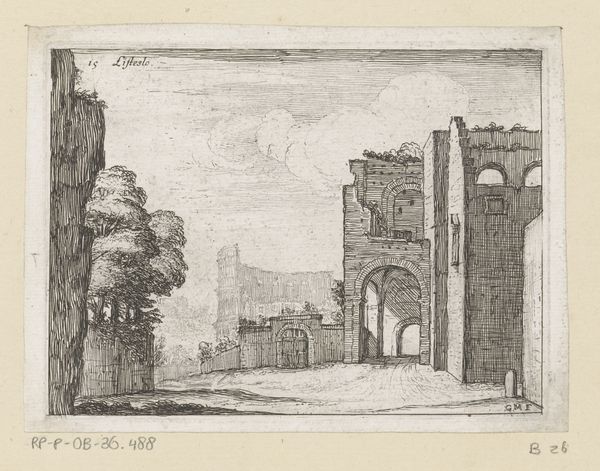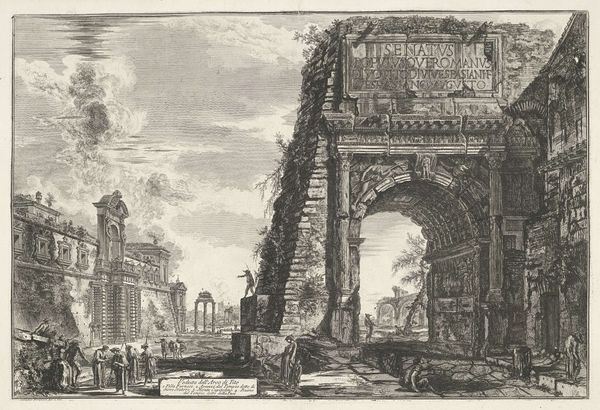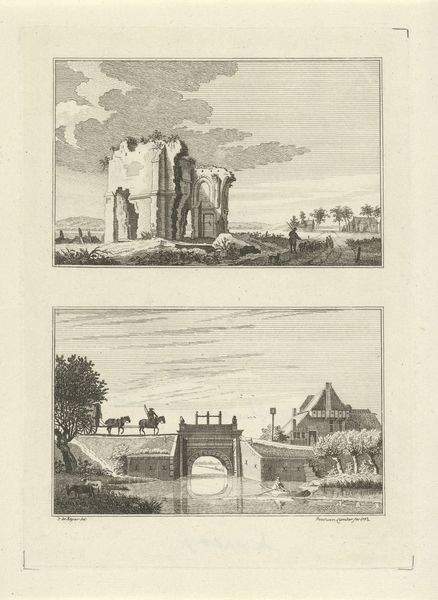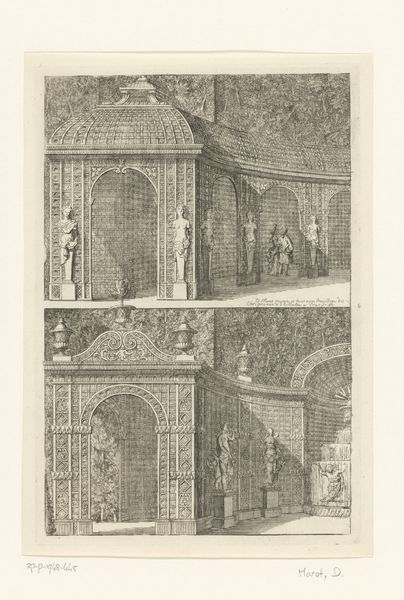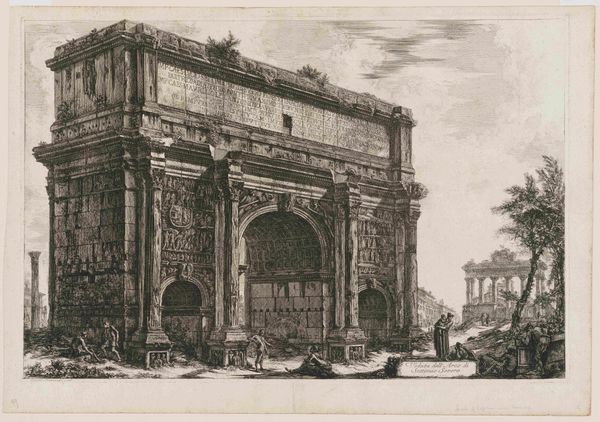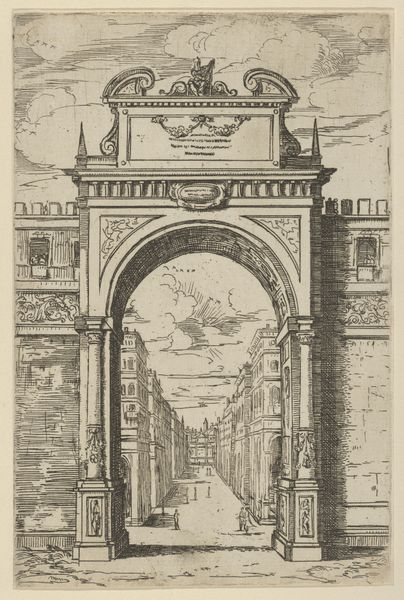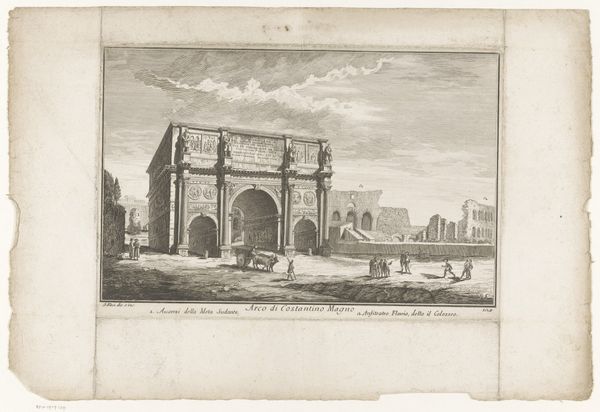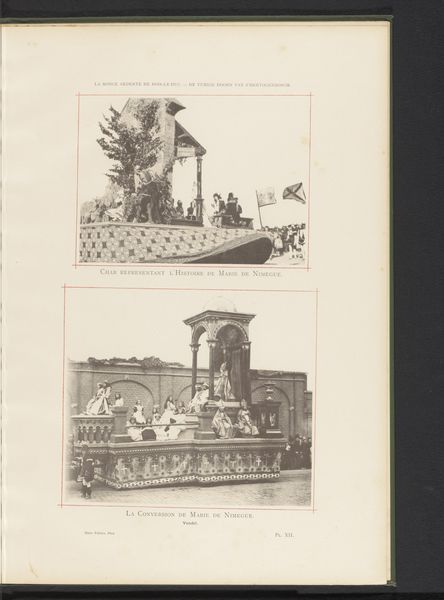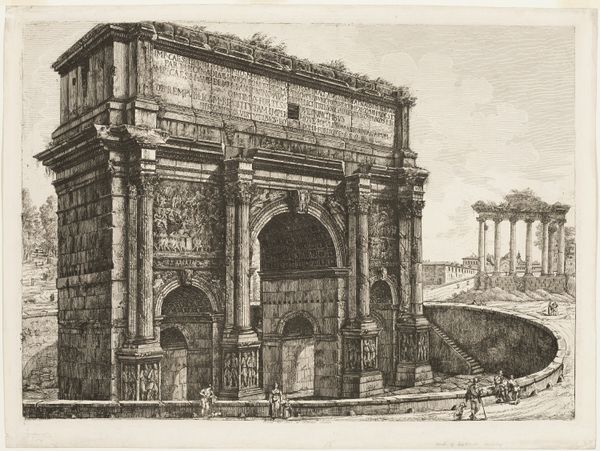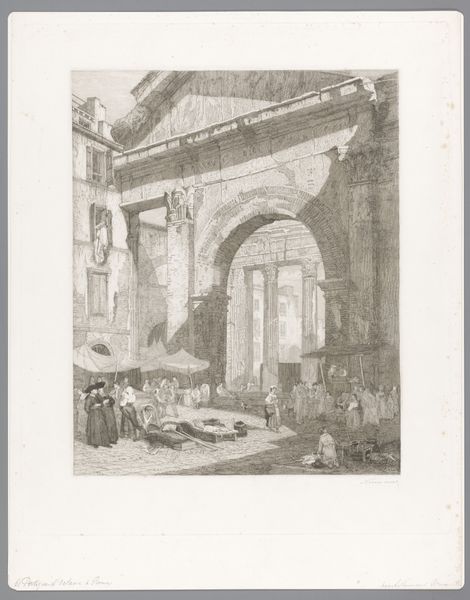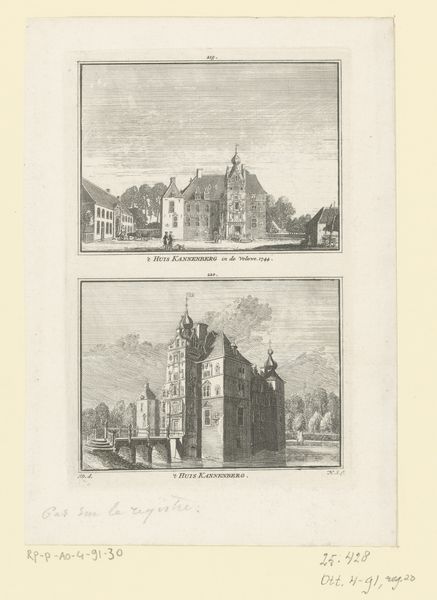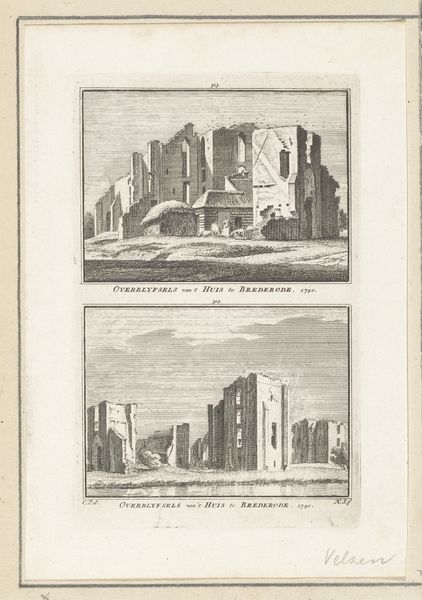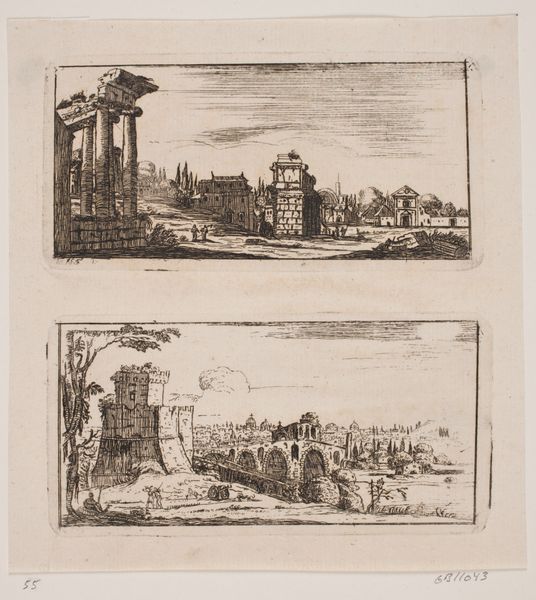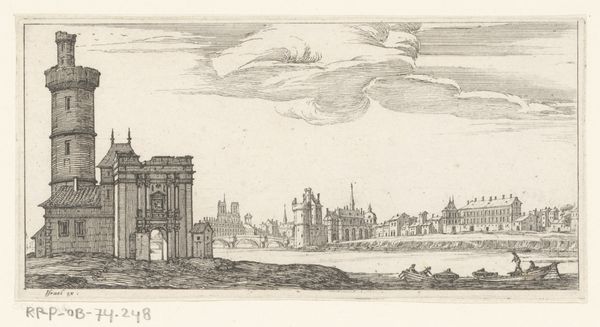
print, engraving, architecture
#
neoclacissism
# print
#
old engraving style
#
landscape
#
history-painting
#
engraving
#
architecture
Dimensions: height 397 mm, height 233 mm
Copyright: Rijks Museum: Open Domain
Curator: This is "Landscapes with Ruins" by Robert Benard, created in 1777. It’s an engraving on paper, showcasing Neoclassical elements. What strikes you immediately? Editor: An overwhelming sense of desolation. Even in the neoclassical precision, there's a deep undercurrent of something lost, a glorious past decayed. The skeletal arches really evoke a passage of time and faded memory. Curator: Absolutely. The crumbling architecture speaks to the ephemeral nature of empires and power, doesn't it? Benard positions us within a very specific, if romanticized, history. He is using ruin as a critique of contemporary power and an elegy for classical ideals, after all. Editor: And there’s such layered symbolism at play. The arch, usually a signifier of triumph and power, here is broken and overgrown. Even the light feels oppressive, highlighting decay rather than grandeur. It's heavy with the symbolism of cyclical history and the transience of human endeavor. Curator: I think it’s important to consider how this reflects the broader sociopolitical climate of the late 18th century. The Enlightenment emphasis on reason was in full swing, yet the fascination with ruins points to an anxiety about the present and future, a fear that even enlightened societies are doomed to crumble. It suggests there is a limit to any political ideal. Editor: I agree. There's a cultural memory encoded within these architectural remnants. Consider how the arch, across different cultures, represents a gateway. Here, it suggests not a pathway to the future, but a fractured path to the past. Benard's artistry isn’t simply replicating classical forms; he's imbuing them with powerful narratives. Curator: Exactly. The placement of small human figures really emphasizes the dominance of the fallen world, too. The figures are small in the overall design. It seems they almost become an illustration of their own marginality, which invites a reading on colonial power. The landscape seems devoid of opportunity or resources, maybe by design? Editor: These details enrich its power and depth, prompting endless layers of meaning and challenging my assumptions, in turn, about the inevitable nature of change. Curator: For me, it highlights how ruins can act as powerful agents of cultural critique. Editor: And I'm reminded of how visual symbols maintain the echo of human stories, across so much loss and time.
Comments
No comments
Be the first to comment and join the conversation on the ultimate creative platform.
